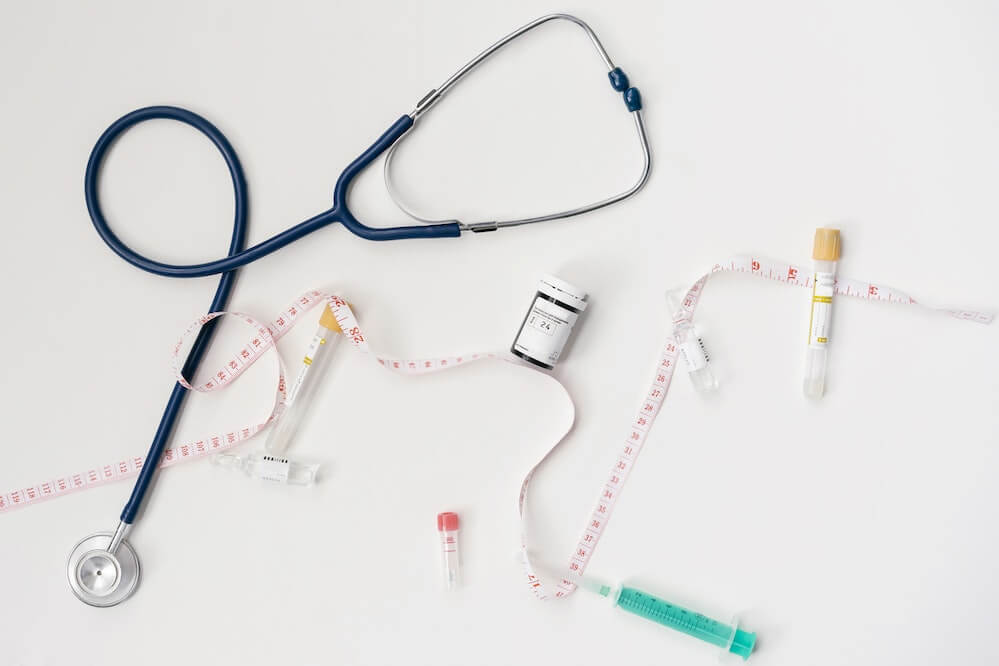Key Takeaways
— While both nurse practitioners (NPs) and doctors can diagnose, treat, and manage patient care, their approach differs; doctors operate from a medical perspective, while NPs work from a nursing perspective.
— The main distinctions between the two professions lie in their education, training, and licensing, with doctors undergoing a longer, more intensive process that includes medical school, residency, and multi-part board exams.
— An NP’s ability to practice independently varies by state, with some states allowing full practice without physician supervision, while others have reduced or restricted practice regulations.
— The job outlook for nurse practitioners is projected to grow much faster than for physicians, with a 46% estimated growth this decade, partly due to an aging population and a shortage of primary care physicians.
Nurse practitioners and doctors are invaluable members of a healthcare facility. They provide care and treat patients with acute or chronic illnesses and health problems. Furthermore, they collaborate and offer their unique perspective to create the best patient care plan.
In this article, we’ll explore the responsibilities of a nurse practitioner vs. a doctor, what some of the key differences are, and whether a nurse practitioner can carry out similar duties to that of a doctor.
What Do Nurse Practitioners Do?

Nurse practitioners (NP) are nurses with advanced skills, education, and training. Thus, they can provide many services doctors can. Depending on the state they’re practicing, they can perform:
— Full Practice: State regulations permit NPs to perform the scope of their practice without physician supervision.
— Reduced Practice: In states with reduced practice, NPs can perform some of their duties without supervision. Mainly, the restrictions revolve around owning practices and prescribing certain medications.
— Restricted Practice: State regulations restrict NPs from acting as independent practitioners and require them to work under the supervision of other health providers.
While the full scope of their duties depends on the specialty, some of the general responsibilities of NPs are:
— Recording medical histories and symptoms
— Performing physical examinations
— Creating patient care plans
— Prescribing medication
— Educating patients
— Diagnosing and treating health conditions
— Ordering diagnostic tests
NPs can give accurate diagnoses and treat patients just like doctors. However, while they have similar duties to physicians and may serve as primary care providers, doctors learn and treat from a medical perspective, whereas NPs from a nursing perspective.
What Do Doctors Do?

Doctors are experienced and certified professionals who practice medicine to help their patients restore their physical and mental health. They assess their patients, diagnose illnesses, and treat and manage diseases. While their specific duties depend on their chosen specialty, some of the general responsibilities include the following:
— Patient examination and diagnosis
— Treatment planning and implementation
— Patient care and follow-up
— Medical record-keeping
— Communication and patient education
— Collaboration and referrals
— Ethical considerations
— Keeping up-to-date with the latest research
— Administration and management tasks in the facility.
While there are many specialization options, doctors can be classified into three main categories:
— Primary care physicians: doctors responsible for treating common illnesses and injuries and managing chronic conditions. These professionals include pediatricians, family physicians, and general internists.
— Surgeons: doctors responsible for performing surgical procedures and providing post-operative care. They can specialize in plastic surgery, orthopedic surgery, general surgery, neurosurgery, vascular surgery, etc.
— Specialists: doctors who have specialized in and focus on a specific area of medicine, such as dermatology, urology, neurology, psychiatry, etc.
Nurse Practitioner vs. Doctor: What’s the Difference?

Doctors and nurse practitioners are similar as they can serve as primary care providers and share job responsibilities, including:
— Examining patients
— Ordering diagnostic tests
— Diagnosing illnesses
— Providing treatment
— Prescribing medication
However, there are still significant differences between nurse practitioners and doctors, for example:
Education and training
To become a nurse practitioner, you’ll have to:
— Earn a bachelor’s degree in nursing (BSN) from an accredited university’s nursing program.
— Pass the NCLEX-RN exam and gain licensure to practice as an RN.
— Obtain at least one year of work experience in a relevant specialty.
— Enroll in a master’s degree in nursing program.
— Take the APRN exam and get certified.
— Apply for the APRN state licensure.
Becoming a doctor will also take a few steps, such as:
— Earning a bachelor’s degree in biology, health science, or a relevant field.
— Taking pre-med required courses such as biology, physics, organic chemistry, general chemistry, biochemistry, statistics, psychology, etc.
— Taking the MCAT exam.
— Applying to and completing medical school.
— Completing the residency program.
— Optionally, completing a fellowship in a chosen specialty.
— Taking the medical board exams (USMLE) and getting licensed.
Specialties
There are many specialty options for nurse practitioners and doctors.
The specialty options for nurse practitioners are:
— Women’s Health
— Orthopedic
— Psychiatric Mental Health
— Neonatal
— Pediatric Acute Care
— Pediatric Primary Care
— Adult-Gerontology Acute Care
— Adult-Gerontology Primary Care
Some of the specialty options for doctors are:
— Surgery
— Pediatrics
— Pathology
— Neurology
— Cardiology
— Obstetrics
— Anesthesiology
— Psychiatry
— Radiology
— Nephrology
— Dermatology
— Pulmonology
Licensing
To be able to practice, NPs must get the RN (registered nurse) license by taking and passing the NCLEX-RN exam, and to become a nurse practitioner, they must get licensed by the state they want to practice in by taking the APRN exam.
On the other hand, doctors, to get licensed, must pass the medical board exams (USMLE), which are broken into several parts and completed over the course of several years. Students take the first exam in the second year of medical school and are tested in the basic health sciences, aging, nutrition, etc. The second exam, taken in the fourth year of medical school, tests clinical knowledge and skills. And the final exam taken after one year of residency determines if a student is ready to practice without supervision.
Work setting

Nurse practitioners and doctors can work in a variety of healthcare settings. Nurse practitioners can work in hospitals, acute care settings, nursing homes, outpatient clinics, schools, or depending on the state they have full practice and can open their own practice.
Many doctors practice in physician’s offices and private practices, while others work in hospitals. They can also work in both settings at the same time. Some doctors choose to focus on clinical research instead of direct patient care or can seek out government positions in healthcare administration.
Salary
The salary range for nurse practitioners and doctors depends on factors such as location, experience, certifications, additional skills, bonuses, and specialty.
According to data collected by Glassdoor, nurse practitioners have an average base pay of $131,421 per year, and the salary range for this position goes from $111,000 to $179,000. The average base pay for doctors is $171,557, ranging from $146,000 to $272,000.
Salary.com reports an average salary of $120,897 for nurse practitioners, ranging from $112,186 to $131,340. And an average pay of $141,626 for doctors, ranging from $117,119 to $162,066.
Lastly, Payscale details an average base salary of $103,202 for nurse practitioners, with the 10th percentile around $84,000 and the 90th percentile around $130,000. The average base pay for doctors is $167,329, with the 10th percentile around $77,000 and the 90th percentile around $258,000.
Job outlook
The U.S. Bureau of Statistics estimates a 46% growth (much faster than average) of employment for nurse practitioners this decade, with the projected employment by 2031 being 359,400 positions.
Contrarily, employment projections for physicians and surgeons are of a 3% growth (slower than average) or a 21,400 increase in numbers. The main reasons for the low projections of employment are:
— Physicians are growing older and retiring,
— The U.S. population is aging rapidly, thus requiring more care for its residents, and
— With the development of new specialties and subspecialties, fewer physicians are choosing primary care areas such as family medicine, pediatrics, and internal medicine.
The Bottom Line
Becoming a nurse practitioner or a doctor is honorable, as both work with patients to improve health and prevent diseases using the latest research and technology. While they may have to go through different education and training paths, they can provide primary care for their patients. By taking primary care duties, nurse practitioners help with the problem of physician shortages and make healthcare more affordable.
If being part of the healthcare industry is something you’re passionate about, check out our Registered Nursing School program and contact us at [email protected] for more information!